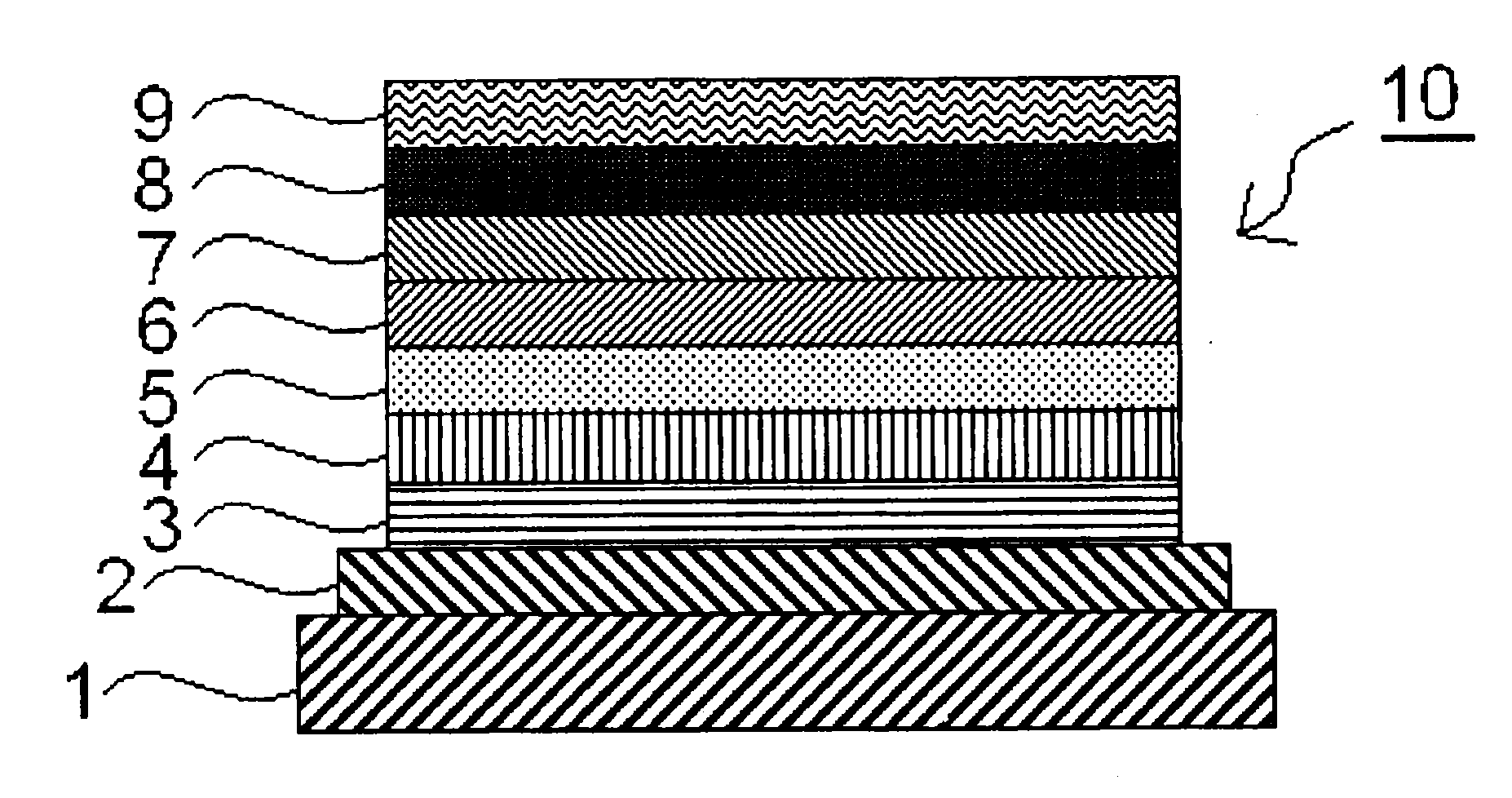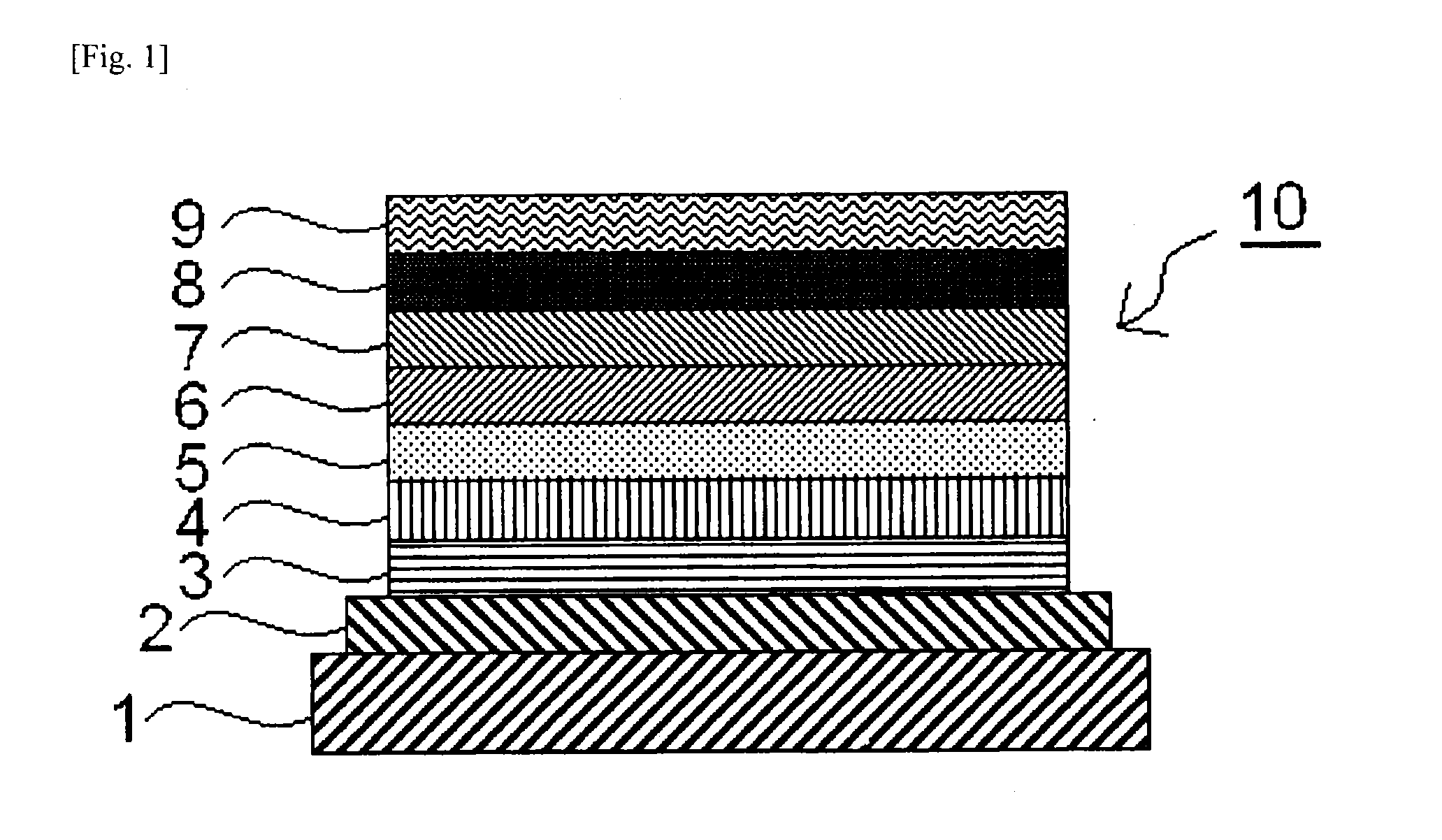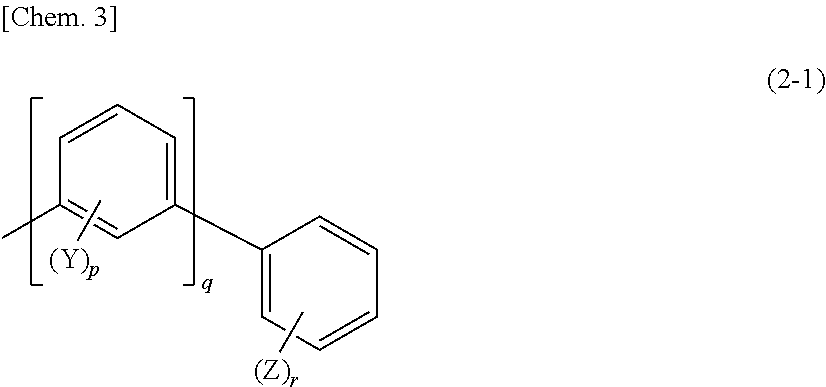Iridium complex compound, and composition, organic electroluminescent element, display device, and lighting device each containing the compound
a technology of complex compound and compound, which is applied in the direction of cadmium organic compound, non-metal conductor, conductor, etc., can solve the problems of troublesome deposition process, poor production efficiency, and extremely difficult, and achieve long working life, high electrical durability, and long pot life
- Summary
- Abstract
- Description
- Claims
- Application Information
AI Technical Summary
Benefits of technology
Problems solved by technology
Method used
Image
Examples
specific examples
[0097]Preferred specific examples of the iridium complex compound of the invention are shown below. However, the invention should not be construed as being limited to the following examples. In this description, Me represents methyl, Et represents ethyl, and Ph represents phenyl.
[0098]
[0099]The iridium complex compound of the invention emits red light and produces an effect wherein the organic electroluminescent element produced by a coating fluid application method using a composition containing this compound has a long working life and high electrical durability. The reasons why the compound produces this effect are thought to be as follows in view of the structural features thereof.
[0100]Examples of the ligands which have been extensively investigated as the ligands of red-phosphorescence iridium complex compounds include 2-phenylquinone-based and 1-phenylisoquinoline-based ligands. Organic electroluminescent elements in which the 2-phenylquinoline-based iridium complex compound ...
example 1
[0302]A 1.5-mg portion of compound D-1 was weighed out and introduced into a brown sample bottle, and phenylcyclohexane was added thereto to adjust the total amount to 100 mg. The compound D-1 was completely dissolved to prepare a composition containing compound D-1 (solid concentration: 1.5% by weight). The composition prepared was placed in the dark having a room temperature of about 15-20° C., and the period required for a solid to separate out therein was measured. Whether a solid had separated out was visually ascertained using a 10-power magnifying lens. The results thereof are summarized in Table 1.
example 4
[0307]An organic electroluminescent element was produced by the method shown below.
[0308]A substrate constituted of a glass substrate and, formed thereon, a transparent conductive film of indium-tin oxide (ITO) deposited in a thickness of 70 nm (sputtering-coated product; manufactured by Geomatec Co., Ltd.) was subjected to patterning into stripes having a width of 2 mm using an ordinary technique of photolithography and etching with hydrochloric acid. Thus, an anode was formed. The ITO substrate which had undergone the patterning was cleaned by subjecting the substrate to ultrasonic cleaning with an aqueous surfactant solution, rinsing with ultrapure water, ultrasonic cleaning with ultrapure water, and rinsing with ultrapure water in this order, subsequently dried with compressed air, and finally subjected to ultraviolet / ozone cleaning. This ITO functions as a transparent electrode.
[0309]Subsequently, a hole injection layer was formed by a wet film formation method under the follow...
PUM
 Login to View More
Login to View More Abstract
Description
Claims
Application Information
 Login to View More
Login to View More - R&D
- Intellectual Property
- Life Sciences
- Materials
- Tech Scout
- Unparalleled Data Quality
- Higher Quality Content
- 60% Fewer Hallucinations
Browse by: Latest US Patents, China's latest patents, Technical Efficacy Thesaurus, Application Domain, Technology Topic, Popular Technical Reports.
© 2025 PatSnap. All rights reserved.Legal|Privacy policy|Modern Slavery Act Transparency Statement|Sitemap|About US| Contact US: help@patsnap.com



